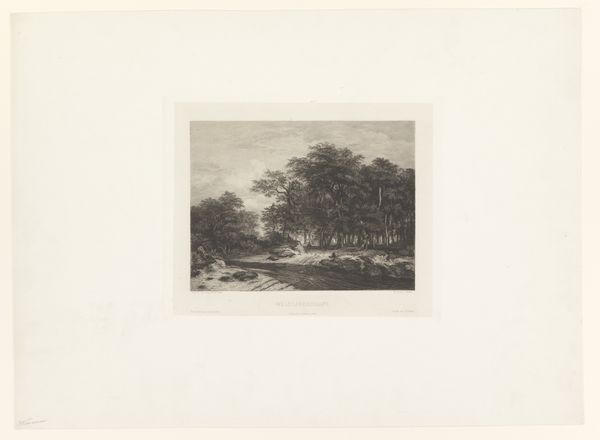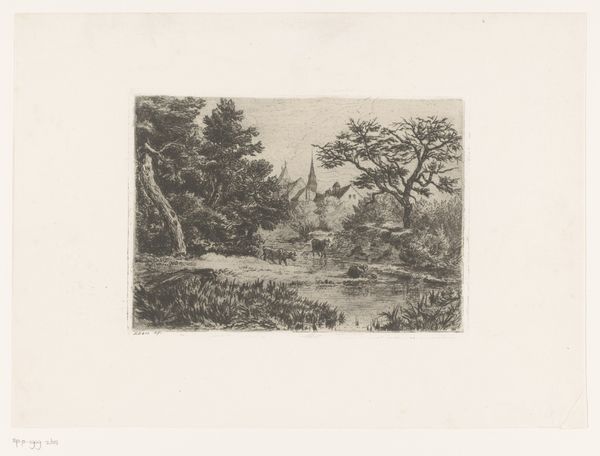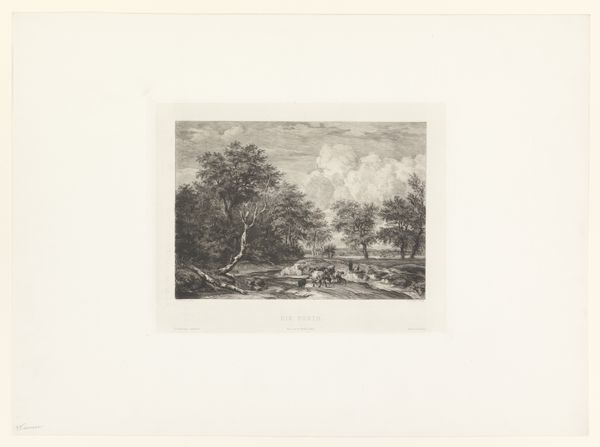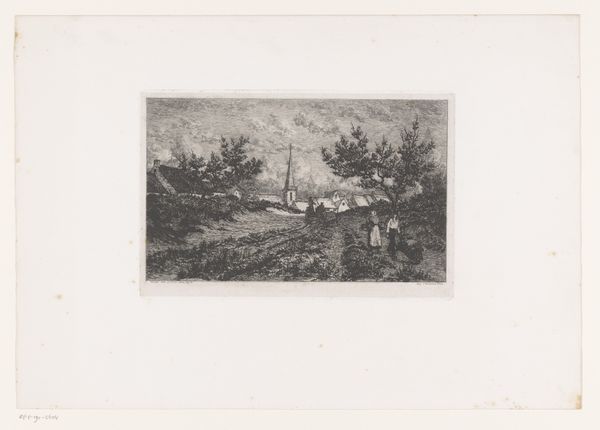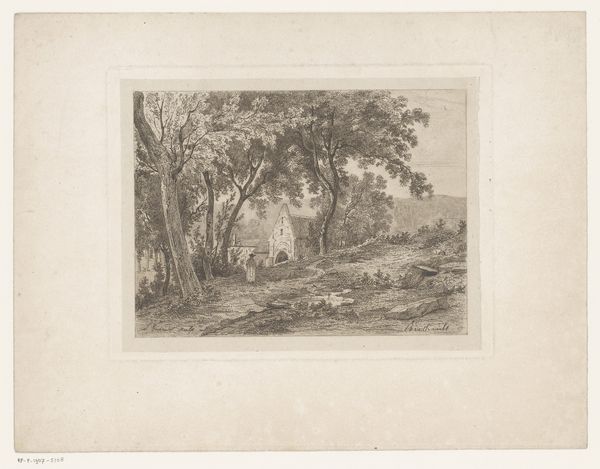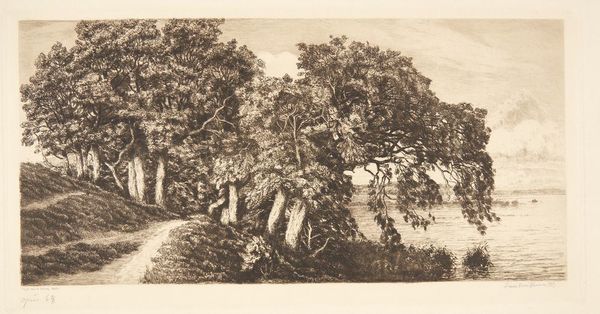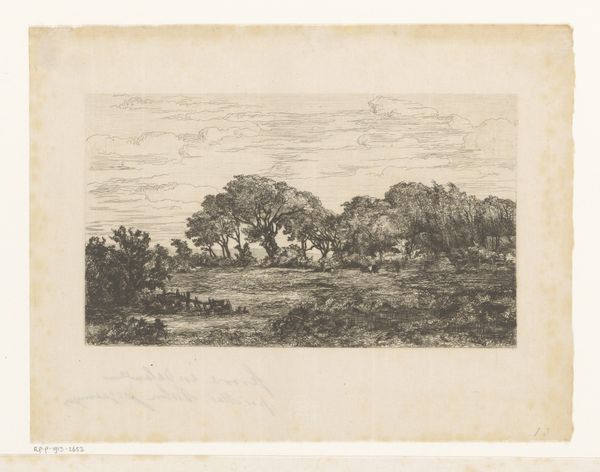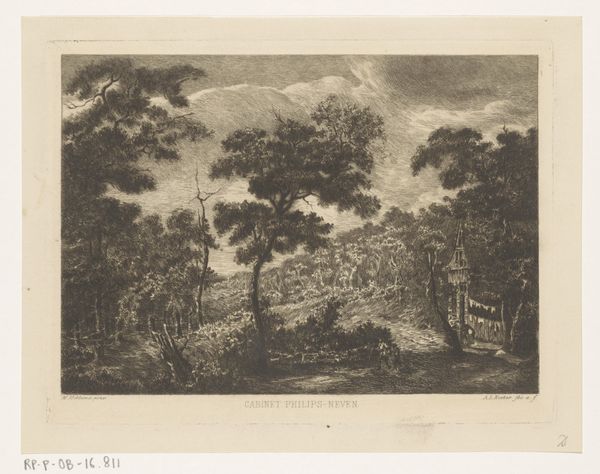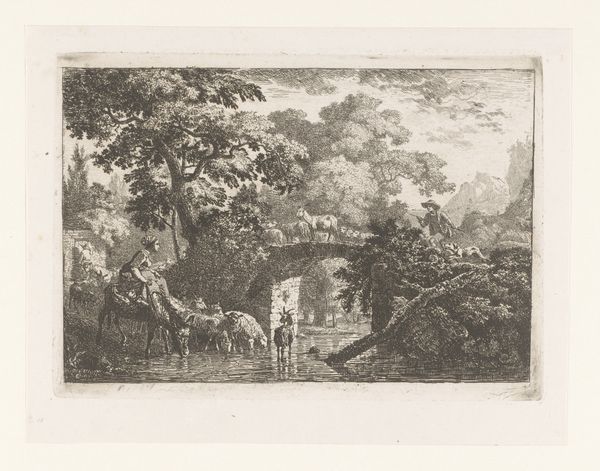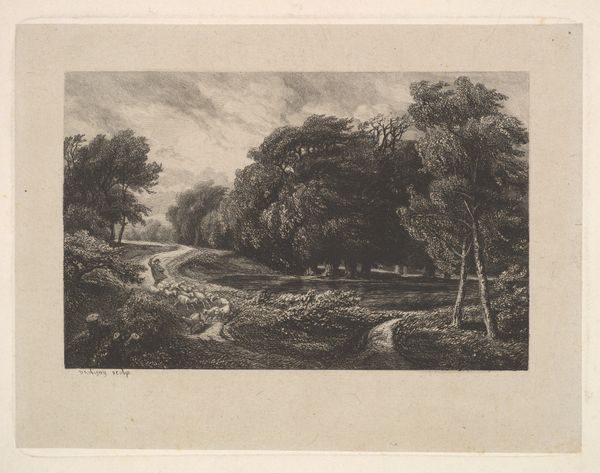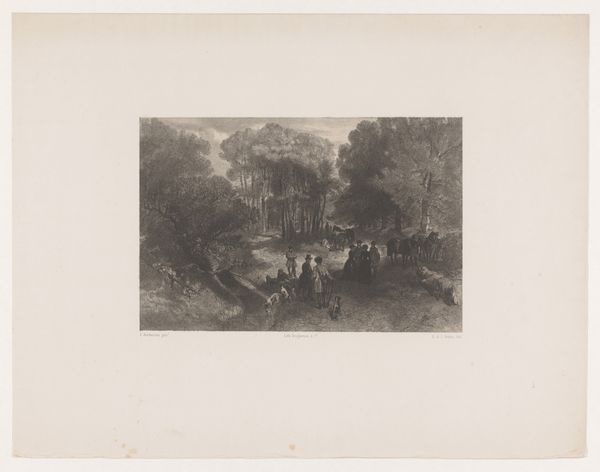
Gezicht op het bos van Fontainebleau met een figuur bij een plas 1874 - 1876
0:00
0:00
print, etching, charcoal
# print
#
impressionism
#
etching
#
landscape
#
charcoal drawing
#
charcoal
Dimensions: height 273 mm, width 315 mm
Copyright: Rijks Museum: Open Domain
Curator: Up next we have Théophile Chauvel’s "View of the Forest of Fontainebleau with a Figure by a Pool," created between 1874 and 1876. It’s an etching printed in charcoal. Editor: Immediately, I'm struck by the mood. It's heavy, atmospheric—almost oppressive. The dark tones and dense foliage create a sense of enclosure, like the forest is breathing down your neck. Curator: It is remarkable what Chauvel achieved using etching. Look at how the delicate lines coalesce to construct a compelling view, balancing light and shadow. The technical skill required for an etching of this complexity points to a dedicated engagement with printmaking. It’s an excellent example of elevating a “lesser” medium, showing that these types of works are worthy of display, right alongside paintings. Editor: Absolutely, and the forest itself, Fontainebleau, carries significant social weight. For decades, it drew artists escaping the confines of Parisian society—a space to challenge academic norms and find a different relationship with nature, outside the industrialising city. Was Chauvel thinking about that artistic lineage and independence when creating this work? Curator: Perhaps, although etching was often commercially viable. Prints reproduced landscapes for a wider, emerging middle-class audience keen to own scenes of the idyllic countryside. Editor: And what about the figure, almost obscured, by the pool? Is it simply staffage or a commentary on our precarious position within an environment that could so easily overwhelm? Perhaps a silent challenge against encroachment? Curator: Interesting questions, certainly! What I admire is how Chauvel transforms readily available materials—metal, acid, paper, charcoal—through labor-intensive processes into an image that carries all these possible interpretations. The production itself is intertwined with meaning. Editor: Yes! The image speaks to the artistic and socio-political climate of its time, a reflection of a changing relationship with nature, industrial society, and art itself. Curator: Ultimately, "View of the Forest of Fontainebleau" highlights the craftsmanship inherent in printmaking. Editor: And it subtly prompts us to reconsider our relationship to the natural world during a period of rapid change.
Comments
No comments
Be the first to comment and join the conversation on the ultimate creative platform.

